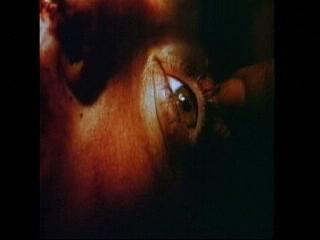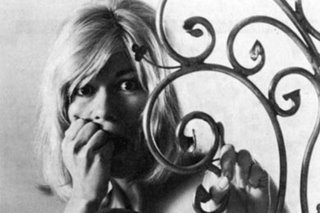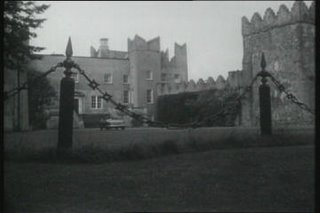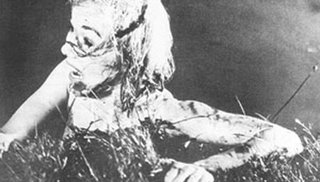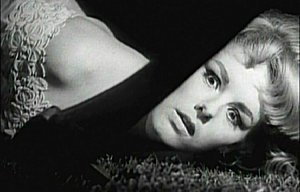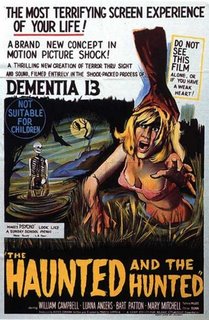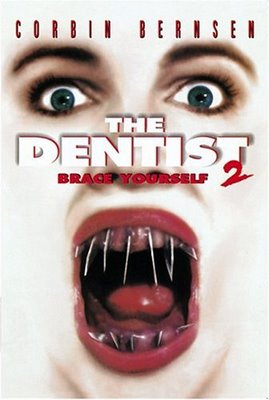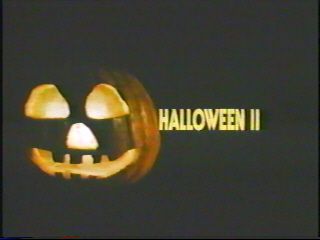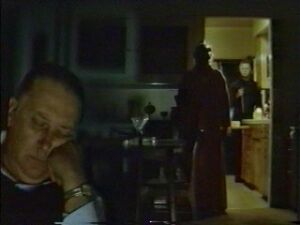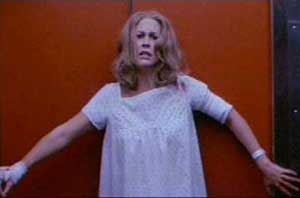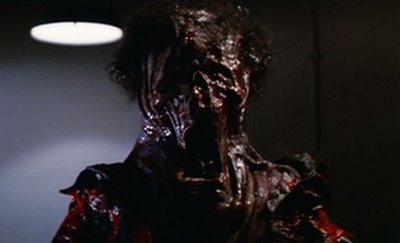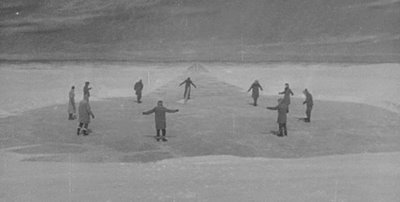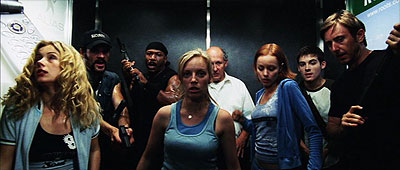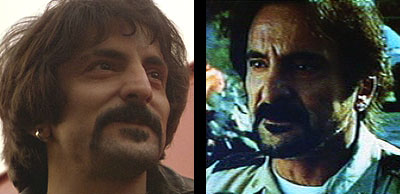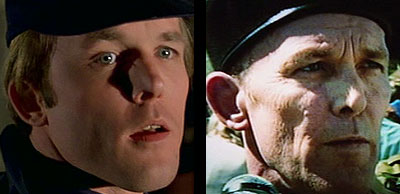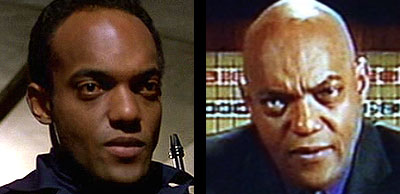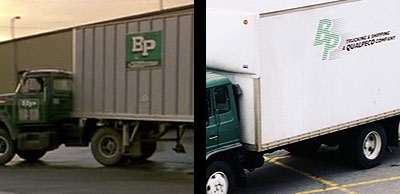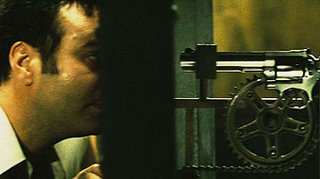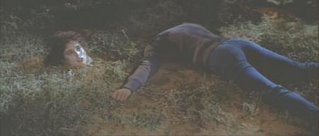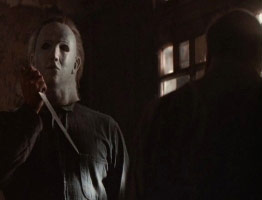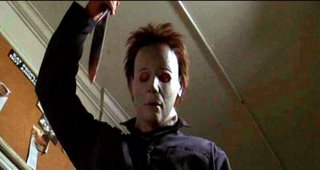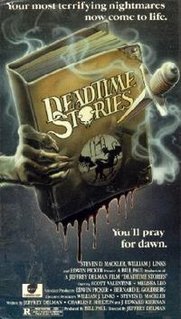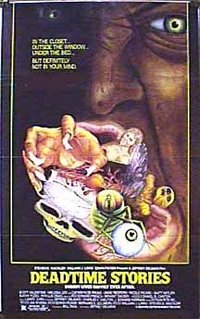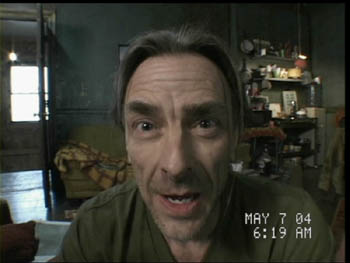
Here are a few extraneous points I wanted to make about zombies, Romero's zombie movies, and the
Dawn of the Dead remake.
1) I added this to the bottom of my review of
Dawn of the Dead (2004) directly below, but I don't think anyone saw it, so I moved it up here:
ADDENDUM II:
Dawn of the Dead joins an impressive roster of fantasy/sci-fi/horror movies that follow the unwritten rule that, before the end of the world, the protagonist must fall asleep and re-awaken. Tom Cruise does it; Sarah Polley does it; Cillian Murphy does it. Sometimes it's a full night's sleep and sometimes it's just a catnap, but it's somehow necessary: you doze off, and when you wake up, everything's different. You may not realize it yet, but the phonograph needle of the universe has skated off the edge, and the nightmare has begun in earnest. It's a deeply Freudian, deeply primal
motif that's been serving the purposes of apocalyptic fiction for decades: the original
Dawn of the Dead begins with Fran waking up against a wall of blood-red carpet with an associate (also awakening) uttering the movie's first line: "I'm still dreaming."
Examples:
War of the Worlds (2005);
Miracle Mile (1988);
28 Days Later (2002);
12 Monkeys (1995). Any others you gentlemen can think of?
2) I missed a cameo/homage in my first roundup (also below): the WGON helicopter from the first version makes an appearance right before the opening titles, in one of the nine or ten heavily-digital shots of Ana fleeing her neighborhood (right before she gets temporarily stuck behind the bus whose panicked driver attempts to take her car from her). Look!
 WGON helicopter
WGON helicopterI hasten to add that I missed this more than once: it took the director's commentary for me to catch on. (You can see the heathaze and fumes coming off the helicopter in the new shot, which corresponds to footage I've seen of helicopters filmed from above: I point this out only by way of admiring the work done on the digital helicopter. That's a hell of a lot of effort just to create an homage that even I missed twice! Way to go, guys.)
3) Thinking about the Zombie Rules and the question of whether they change from Romero to the new movie, I suddenly realized that I can't think of a single character in any of the Romero movies who dies a non-bite-related death and then comes back as a zombie (Unless you count the very first zombie in the graveyard in
Night, but we don't really know anything about him, do we?) Ignoring that zombie for purposes of argument, every other
character who becomes a zombie gets
bitten by a zombie (including Stephen in the elevator, above) so it might as well be the new rules. I'm not sure what I'm getting at, but the 2004 zombie plague spreads about ten times faster than Romero's zombie plagues, and this may have something to do with a) the new fast zombies as well as b) yes, you have to be bitten, but (as octopunk pointed out before) how close are any of us to hospitals, morgues, funeral homes, graveyards etc. anyway?
4) Kyle Cooper, oft-imitated but never-equalled film design guru
extraordinaire, did the opening title design for 2004's
Dawn of the Dead. He's the guy who did the titles to
Se7en (which was his first claim-to-fame); He's done a number of title sequences in this style before, so I was glad to discover that they went and got the real McCoy for this movie.
5) Octopunk and I have had a few conversations about the intriguing inverse relationship between the enjoyment levels on either side of the movie screen. With sci-fi and horror movies specifically, the worse things are for the characters in the story, the better they are for us, watching the movie. Trailers for upcoming summer movies understand this and work like travel brochures in reverse: they keep tantalizing you with how
BAD things are in the place they're talking about. The final "stinger" shot in the trailer is usually something truly, deeply awful like the tanker truck slamming into the windshield (and your face) in
Twister or the Alien drone moving its head to nuzzle Ripley's in
Alien 3.
So, along those lines (bad=good) I think it's fair to say that the true charm of the zombie threat is that it's just way, way worse than anything else. I refer you to my comments about the "automatic end of the world" below; when I was discussing zombie movies with a few friends who were over at my house the night before Thanksgiving (to look at the balloons) and we watched the openings of both versions of
Dawn of the Dead, I said, "Against vampires, you've got a chance. Against Aliens [Scott/Cameron/Fincher] you've got a chance. Against 'body snatchers' [e.g. "pod people"] you've got a chance. Against "the machines" [
Terminator or
Matrix] you've got a chance. Against "Martians" [H. G. Wells] you've got a chance. Against zombies...forget it." When we got back from the title sequence and Ving Rhames was holding the shotgun on Sarah Polley, we agreed that it was clearly game over already.
There are some interesting ideas here, I think.
Why are they so damned unstoppable, especially given that they don't have amazing powers (like vampires) or super-advanced technology (like the machines) or the ability to blend in (like pod people)? I can think of a couple of reasons. First of all, unlike other threats that take over the identities of the good guys, the zombies do this very quickly and indiscriminately. Remember how Veronica Cartwright came outside and noticed that pods of Donald Sutherland and the others were forming, and woke them up (thus cancelling the lengthy pod-forming process)? Major setback for the pods, right? (Because they were creating duplicates, which is apparently a painstaking job.) Well, had those been zombie bites instead of pods, forget it. It would have only taken a few minutes (Romero) or a few
seconds (2004) for the protagonists to be permanently out of the game (or rather, playing for the other team).
So speed's important and communicability is important but what's most interesting about the zombie threat is something that octopunk hinted at with his phraseology about how the zombies "get the upper hand and never lose it" (which implies a determined struggle on both sides): for such a deadly, unstoppable threat, they're
incoherent. Unlike every other threat I mentioned two paragraphs above, they don't have any kind of master plan at all. They're not trying to do anything
per se, so they can't be reasoned with or fooled or delayed or outwitted. The Warchowski's "machines" used us for food, too, but their technique for doing so was very sophisticated, and, unfortunately for them, allowed a narrow window of human consciousness and tactical breathing room (the "matrix") in which we could mount a subversive rebellion and inculcate a subsequent military revolution out in the real world. Vampires get fixated on individual prey or get overcome by hubris and make mistakes. The aliens will be canny; they will
negotiate with Ripley ("Tell those drones to back off or I'm torching the eggs") to even the odds; human ingenuity prevails. But the zombies are pure animal force; pure Darwin, and they can't be reasoned with or out-schemed. So they take over the world, every time, as noted. It's got to be an especially galling defeat, because losing to "the machines" or the body snatchers at least means there's going to be something left that you can respect a little bit ("This is our time," Agent Smith tells Morpheus), but the zombies just turn the entire world into shit irreversibly (as we see in the opening of
Day of the Dead -- nice "Brave New World" you guys created there...makes it all worthwhile), which makes them scarier and more deadly by an order of magnitude.
6) I went back and re-read "Home Delivery" by Stephen King (now that I've seen all the Romero) and I think it's terrible. I stress that the outer space sequence is scary as hell and well done, but he should have just made up his own story and not grafted that idea onto Romero's. I'm completely convinced that the one thing the zombie story
shouldn't have is a coherent explanation. It ruins it somehow. Besides, how much scarier is it if we just never find out what the hell happened? It seems much more realistic to me. (It must have taken a long time, in both Wells' version and Spielberg's, to figure out what suddenly happened to the invading aliens, even though the narrator understands immediately.) So "Home Delivery" combines a needless explanation, a mediocre retelling of the "zombies taking over, as seen on television" concept, and then a boring graveyard-shootout in a little island town. Yawn.
I can't even think about zombies on an island now without going back to the extreme end of the 2004
Dawn of the Dead (which was added much later, in Los Angeles, when test-screening audiences objected to the suddenness of the "gunshot/blackout" ending. It's like
Schrödinger's Cat, isn't it? "Are you
sure you want to see what happened?"). In the DVD commentary, the director etc. refer to the looming shadow through the mist in the camcorder footage by saying, matter-of-factly, "there's Zombie Island" and not even discussing it, as if there was never any question for the filmmakers that the survivors were on their way, deliberately, to a place known as "Zombie Island." They really should have stayed at the mall, if you ask me.
7) The opening of 2004
Dawn follows a specific pattern that I really like, which compares with the opening of
Revenge of the Sith and the
Bathtime at Clerkenwell animation: first you focus quietly on a SINGLE item (spaceship, singing bird, zombie) until you get the basic idea, and then you pull back or open a door or glide past the edge of a battlecruiser and suddenly see the entire thing. (Wouldn't Sarah Polley and her husband have HEARD all of that shit going on outside their house? Helicopters; sirens; gunfire; burning houses and vehicles; car crashes; explosions; screaming—yet the bedroom is so quiet you can hear the tiles on the old-school digital clock flipping over.) It's a great technique. The Romero movies get the idea across with verbal explanations, each time. (You don't even understand the zombie in the 1968 graveyard until Ben explains it.) But the 2004 version
teaches you what's happening by
showing you the husband's instant tranformation so you can't possibly misunderstand or get confused.
8) I quickly got tired of hunting down reviews of 2004
Dawn of the Dead because even the positive ones hasten to add the caveat that the new movie "lacks the depth/social commentary" of the original, which (they point out) was so shrewdly knowing in its equasion of mall-shoppers with zombies. I think that's bunk: First, the new movie has plenty of "depth" of its own as I've noted; it's about 9/11 and AIDS and CNN and consumerism and guns and other pertinent themes, and, anyway, there's just no way to conclude that a story so primally evocative is without depth unless you're
looking for categorical excuses to dismiss it because of its formal identity as a bloody horror movie. (Apparently the original was "a satire," which is news to me.) Where were all these critics when the original came out? The only review I can find from 1978 that praises Romero's
Dawn of the Dead is by Roger Ebert, who basically gets it right. Being on the cultural vangard is easy when it's twenty-six years later; it's getting things right
at the time that's hard because you've got to think for yourself, and not mindlessly follow the herd in search of sustenance, like a...well, never mind.
That's it for now! Truly outstanding material all around. Happy Thanksgiving!
